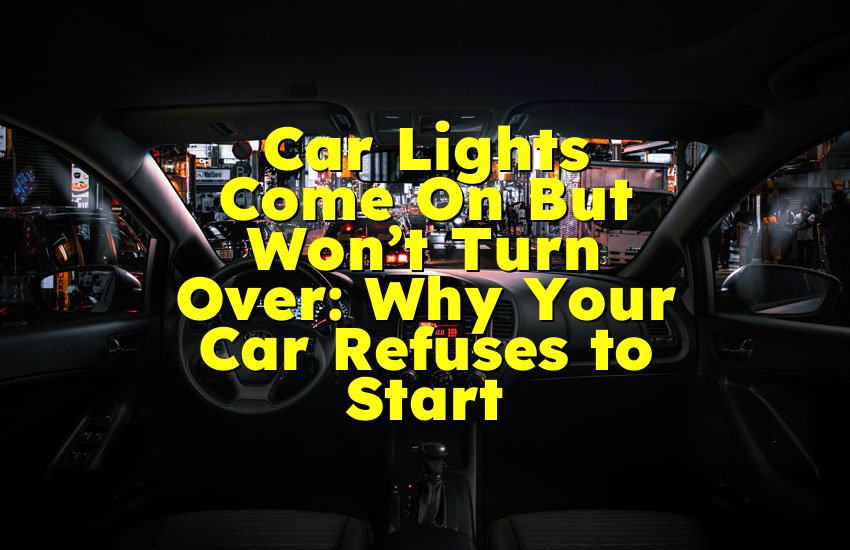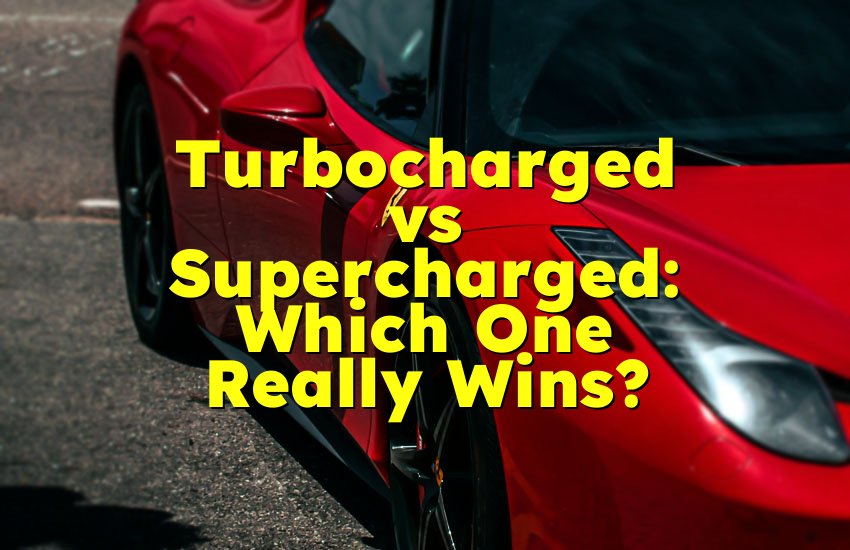As an Amazon Associate, I earn from qualifying purchases at no extra cost to you.
How to Clean Fuel Injectors and Make Your Car Run Like New
You start your car, and something just doesn’t feel right. Maybe it’s a rough idle, poor gas mileage, or a weird hesitation when you press the gas. If this sounds like you, the problem could be dirty fuel injectors. The good news is, you don’t need to be a mechanic to fix it. Cleaning your fuel injectors can make a big difference in how your engine runs. In this article, you’ll learn the exact way to clean fuel injectors in an easy, clear, and safe method right from home.
Know When They Need Cleaning
When your car isn’t running like it used to, it might be time to check your fuel injectors. These small parts spray fuel into the engine, and they need to be clean to work well.
Over time, fuel injectors can get dirty from gas deposits and carbon build-up. This can make your car slow, rough, and even waste fuel. Before cleaning them, it is important to understand the signs that show they need attention.
One clear sign is poor fuel mileage. If you’re visiting the gas station more than usual, your fuel injectors may not be spraying fuel the right way. Another common sign is a rough engine.
Your car might shake when it’s stopped or even stall. This happens because the engine is not getting the right mix of fuel and air. You might also notice your car takes more time to start or doesn’t feel smooth when speeding up.
Check engine lights can also show fuel injector problems. This light can turn on for many reasons, but one of them is a misfire caused by dirty injectors. A misfire means the fuel isn’t burning correctly in one or more cylinders. When this happens, your car’s computer knows something’s wrong and sends a warning.
You should also listen to your car. If you hear knocking, pinging, or clicking sounds that weren’t there before, it’s a good idea to inspect the injectors. Strange smells can also be a clue. A strong gas smell can mean your injectors are leaking or clogged.
If you’re not sure, you can use a fuel pressure test kit. This tool helps you check the fuel pressure in your engine. If the pressure is too high or low, it could mean the injectors are clogged or damaged.
You can also do a simple DIY test. With the engine off, unplug each fuel injector and listen for a clicking sound using a mechanic's stethoscope. If one injector sounds different from the others, that one may be clogged.
- Bad gas mileage
- Rough idle or engine shaking
- Slow starting
- Loss of power
- Check engine light
- Strange engine noises
- Fuel smell
- Failed pressure test
- Uneven clicking sound from injectors
Use a Fuel Injector Cleaner Additive
The easiest way to clean your fuel injectors without removing them is by using a fuel injector cleaner additive. This is a special liquid you pour into your gas tank that helps clean the inside of your injectors while you drive. It's simple, cheap, and works well for light dirt and build-up.
First, choose a good quality fuel injector cleaner from a trusted brand. Look for one that is made for your type of fuel, like gasoline or diesel. Check the label to make sure it works with your vehicle.
Next, wait until your fuel tank is low but not empty. You want less fuel in the tank so the cleaner mixes better and works stronger. Pour the right amount of cleaner into your gas tank. The bottle will tell you how much to use based on how much fuel is in your tank.
After adding the cleaner, fill up your tank completely with fresh fuel. Then, drive your car like normal. Try to take a long drive if you can. This gives the cleaner more time to run through the system and do its job.
You should feel small changes after one full tank. The engine may feel smoother, and your gas mileage may improve. For very dirty injectors, you may need to use the cleaner again in your next few fill-ups.
This method won’t fix fully clogged injectors, but it helps keep them clean if you use it often. It's a great first step or regular maintenance method to prevent bigger problems later.
Be careful not to use too much cleaner. Follow the instructions on the bottle. Adding too much won't clean faster and could even hurt your engine.
- Buy a trusted fuel injector cleaner
- Add to nearly empty fuel tank
- Fill with fresh fuel
- Drive normally or take a long drive
- Repeat if needed
- Don’t overdose the cleaner
Use a Fuel Injector Cleaning Kit
If fuel additive doesn’t help enough, the next option is using a fuel injector cleaning kit. This kit connects to your fuel system and sends strong cleaner directly through the injectors. It’s a deeper clean than just adding something to the gas tank.
You can buy these kits online or at auto parts stores. Look for one that fits your engine type. Most kits come with a canister, hose, and connectors.
Before you begin, make sure your engine is cool and your car is parked in a well-ventilated area. You’ll also need to remove the fuel pump fuse or relay. This stops fuel from the tank from mixing with the cleaner. Follow your car’s manual to do this safely.
Next, connect the cleaning kit to the fuel rail. This is the metal pipe that delivers fuel to the injectors. Most kits include fittings that match different car models. Make sure all connections are tight so nothing leaks.
Then, pour the cleaning solution into the kit’s canister. Some solutions are pressurized and others need a separate air compressor. Follow the instructions exactly.
Start your car and let it run. The engine will burn the cleaning fluid instead of fuel. Let it run until all the solution is used up, usually about 10 to 15 minutes. You may hear changes in how the engine sounds. That's normal as the fluid breaks up carbon and other build-up inside the injectors.
Once it's done, turn off the engine and reconnect the fuel pump relay. Then, start the engine with regular fuel and take it for a short drive to flush out any leftovers.
This method can bring injectors back to life if they were badly clogged. It also makes the engine feel like new again. You may notice smoother starts, more power, and better mileage right away.
- Buy correct cleaning kit
- Disconnect fuel pump fuse
- Connect kit to fuel rail
- Add cleaning fluid to canister
- Run engine until fluid is used
- Reconnect fuel system
- Drive to finish the clean
Remove and Clean Injectors by Hand
Sometimes, the only way to get fuel injectors really clean is by taking them out and cleaning them by hand. This is a big job, but if you’re comfortable using tools, you can do it at home. You’ll need basic tools and a fuel injector cleaning kit.
First, disconnect your battery to stay safe. Then, find your fuel injectors. They’re usually near the intake manifold or on the side of the engine. You may need to remove parts like the air intake or fuel rail to reach them.
Before removing anything, label the wires and connections so you know where they go later. Then, remove each fuel injector carefully. Don't bend or damage the tips.
Once out, look for signs of damage like cracks, leaks, or burn marks. If an injector is broken, it's better to replace it.
To clean them, spray each injector with a fuel system cleaner while pulsing it open with a power source. You can use a small 12V battery or injector cleaning tool for this. The pulsing helps the cleaner go through the tiny spray holes. Do this until the spray comes out evenly and clean.
You can also soak the injectors in a cleaning solution for a few hours, but make sure the solution is safe for plastic and rubber.
Once clean, dry them and inspect the rubber O-rings. If they’re cracked or hard, replace them with new ones. A leaking O-ring can cause fuel loss or engine damage.
Put the injectors back in, reconnect all wires and hoses, and make sure everything is tight. Reconnect the battery and start the engine. It may take a moment to start as the fuel system fills back up.
This deep clean can save you from replacing expensive parts and make your car feel brand new.
- Disconnect battery
- Remove engine parts to reach injectors
- Take injectors out carefully
- Clean with spray and pulsing tool
- Soak if needed
- Replace old O-rings
- Reinstall and test engine
Prevent Future Clogs
Keeping your fuel injectors clean is easier than fixing them once they’re clogged. Regular care can save you time, money, and stress. One of the best things you can do is use good fuel. Cheap gas often has fewer cleaners in it, which can lead to build-up.
Try using top-tier gasoline brands that include engine cleaning agents. You don't have to buy premium fuel, just choose better brands. You can also add injector cleaner to your gas tank every few thousand miles as a habit.
If you drive short trips often, your engine doesn't get hot enough to burn off carbon. Try to take longer drives sometimes to help clean the system naturally.
Change your fuel filter regularly. A clogged fuel filter can send dirt straight to the injectors. Follow your car's manual, but many filters need changing every 20,000 to 40,000 miles.
Also, keep your air filter clean. A dirty air filter makes the engine run rich, which means more fuel and less air. This can lead to more deposits inside the injectors.
Lastly, don't wait when your check engine light turns on. Get it scanned quickly so you can catch problems early before they damage your injectors or engine.
- Use top-tier gasoline
- Add cleaner often
- Take longer drives
- Change fuel and air filters
- Fix engine lights quickly
- Keep regular maintenance schedule
Replace Bad Fuel Injectors If Needed
Sometimes, cleaning doesn’t fix the problem. If your fuel injectors are old, cracked, or completely blocked, the best solution is to replace them. This might sound scary, but it's not too hard if you already know how to remove them for cleaning.
Start by buying the right replacements. Use your car's manual or ask at an auto parts store to get the exact match. Some injectors are made special for your engine type, so don't guess.
Follow the same steps as removing for cleaning: disconnect the battery, take off the fuel rail, and gently remove the injectors. Instead of cleaning, you'll throw the old ones away.
Before putting in new ones, check the O-rings. Most new injectors come with fresh O-rings, but if not, buy some. Lightly coat the O-rings with engine oil so they go in smoothly and seal tight.
Push each injector into place firmly but gently. Make sure each one is seated all the way. Reinstall the fuel rail, plug in the connectors, and check that nothing is loose.
Reconnect the battery, start your engine, and listen closely. If it runs smooth, you've done it right. A small fuel smell at first is normal but should go away quickly.
Replacing bad injectors can bring your car back to life. You'll likely feel stronger engine power, faster starting, and quieter operation.
- Buy correct replacement injectors
- Remove old ones carefully
- Check or replace O-rings
- Lubricate before installing
- Reconnect everything tight
- Test engine for smooth run
Final Thoughts
Cleaning your fuel injectors can completely change how your car runs. You don't always need a mechanic. You can do this yourself with the right tools, care, and time. Whether you use a cleaner in the gas tank, a cleaning kit, or take them out by hand, your engine will thank you. Regular cleaning helps prevent future problems and keeps your car feeling new. Don't wait for a warning light. Start early, and your car will run smoother, last longer, and save you gas money every day.
| Method | Tools Needed | Difficulty | Cost | Best For | Time Needed |
|---|---|---|---|---|---|
| Fuel Additive | Cleaner, fuel tank | Easy | Low | Light dirt, regular care | 10 mins to add |
| Cleaning Kit | Cleaning kit, fuse puller | Medium | Medium | Clogged injectors | 1 hour |
| Remove and Clean | Tools, cleaner, battery | Hard | Low-Mid | Deep cleaning, tight budget | 2-4 hours |
| Replace Injectors | New injectors, tools | Medium | High | Damaged or old injectors | 2-3 hours |
| Preventive Maintenance | Top-tier gas, filters | Easy | Low | Long-term care | Ongoing |
Frequently Asked Questions (FAQs)
Is it safe to use fuel injector cleaner in every tank?
Yes, it is safe to use fuel injector cleaner often, but not in every tank. Using it too much can harm rubber seals or make the fuel too thin. Most brands recommend adding it every 3,000 to 5,000 miles. This keeps your injectors clean without wearing them out. Always read the label on the bottle and follow what it says. Using a cleaner once a month is a good habit if you drive often or use low-quality gas.
Can I clean fuel injectors without removing them?
Yes, you can clean fuel injectors without taking them out. The easiest way is by using a fuel injector cleaner that goes into your gas tank. This method helps clean light build-up while you drive. You can also use a fuel injector cleaning kit that connects to the fuel system and sends cleaner directly through the injectors. This gives a deeper clean without removal. However, very dirty or blocked injectors may still need to be removed.
Do I need to replace all fuel injectors at once?
No, you do not always need to replace all of them. If only one or two are bad, you can just replace those. But some people prefer to change them all at the same time for even performance. If your car has many miles and more than one injector is acting up, replacing all might be a smart choice. It can also save time and labor if you're already removing the fuel rail.
Is it expensive to clean fuel injectors at a shop?
Yes, it can be more expensive to clean fuel injectors at a shop. Most repair shops charge between $80 to $200 or more depending on the type of service. Deep cleaning or removal can cost more. Doing it yourself at home with a cleaning kit or fuel additive is much cheaper. But if you're unsure or the injectors are badly clogged, getting help from a shop might be safer.
Can dirty fuel injectors damage the engine?
Yes, dirty injectors can hurt your engine over time. When they are clogged, the fuel spray is not even. This makes the engine burn fuel the wrong way, which can lead to rough idling, knocking, or even engine misfires. Long-term damage can include worn pistons or damaged valves. That's why it's important to keep injectors clean and fix any problems early before they get worse.
Do I need special tools to clean fuel injectors?
It depends on the method you choose. For using a fuel injector cleaner in your gas tank, you don't need any tools. If you use a cleaning kit, you'll need hoses and connectors that come with the kit. To clean injectors by hand, you'll need tools to remove engine parts, plus a spray cleaner and a way to pulse the injectors open. These tools are basic and not very costly.
Is it better to replace or clean fuel injectors?
It depends on the condition. If the injectors are only dirty, cleaning is better and cheaper. But if they are old, cracked, or leaking, replacement is the best choice. Cleaning can bring back lost performance, but damaged injectors will never work right again. Always check the condition first before deciding. Sometimes, you clean first, and if that doesn't work, then you replace.
Can fuel injectors cause starting problems?
Yes, dirty or clogged fuel injectors can make your car hard to start. If fuel doesn't spray properly, the engine won't get the right mix of fuel and air. This can lead to long cranking, stalling, or even no start at all. Cleaning the injectors can fix this in many cases. If the problem continues after cleaning, there may be other issues like a bad fuel pump or ignition problem.











